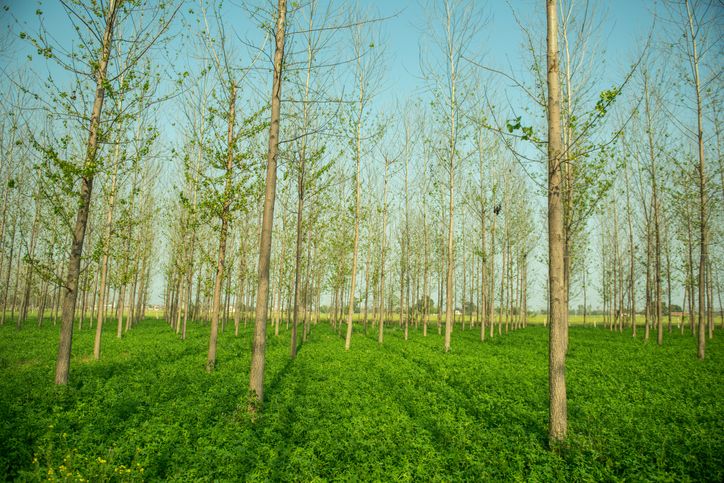Agroforestry is the practice of producing wood, non-timber crops, or animals on a single parcel of land. It is the incorporation of plants, animals, and/or trees into sustainable, productive systems.
Components of an agroforestry system
- Land:
Agroforestry is a method of managing land as an agricultural resource for the long-term benefit of society. While it may be used on all types of terrain, hillside farming, where agriculture may cause a rapid loss of soil, requires specific consideration.
- Trees:
Perennial shrubs are the main emphasis. Because they can fix nitrogen and make it available to other plants, legumes are the most important of these trees. On a small farm, trees may play the following roles:
- Food sources, such as edible leaves, nuts, and fruits.
- Building supplies, such as posts, lumber, and branches for wattle (a structure constructed of thin poles entwined with branches, etc.).
- Supplies of non-edible materials include sap, resins, tannins, insecticides, and medications.
- Energy sources.Ex: Eucalyptus camaldulensis, Tectona grandis, Alnus nepalensis, Prunus ceramides, etc.
- Non-tree crops:
The crop plants are chosen that are already cultivated in a certain area for marketing, animal feeding, or domestic use or those that show high promise for production in the area. However, in keeping with the agroforestry philosophy, other values should be sought while choosing crops, such as:
- Crops for economic gain.
- Crops for the farmer’s food.
- Nutritious Crops.
As a result, selecting a crop requires making a choice based on knowledge about the crop, adaptations, and production goals.
- Animals:
Any domestic animal may be used in agroforestry systems. The choice of animal will depend on values like using animals for non-food items, for work, for making money, and for farmers’ food.
Types of Agroforestry Systems
Agrisilvicultural Systems ( Crops + Forest crops ):
The crops and trees that are interplanted in between are the components of these systems. Given that protective irrigation is used, crops can be cultivated for two years. If careful farming is done, crops can even be grown in this technique for four years.
Ex: Camelia Sinensis (Tea)under Dalbergia sissoo; Turmeric and gingerunder Eucalyptus camaldulensis.
Silvopastoral Systems ( Silviculture + Pasture management ):
Woody plants are employed in silvopastoral systems to grow pasture. Trees or shrubs cultivated particularly as fodder, for animals, or to enhance the soil’s quality can also be included as part of this system. Silvopasture systems can be divided into three groups: protein banks, living fences made of fodder trees and hedges, and trees and shrubs on grassland. Ex: Ficus semicordata, Litsea monopetalous, Artocarpus lakoocha, and cow and goat rearing.
- Agrosilvopastoral Systems ( Crops + Forest crops + Pasture management ):
It consists of a mix of fields, trees, and crops. Over the field, trees and crops coexist. The two categories apply here: domestic gardens and wooded hedgerows.
Napier, Stylo, Broom grass, and seasonal crops are planted under the fodder tree, as well as goat and cow rearing.
Importance of Agroforestry Systems
- Agroforestry systems utilize land to the fullest.
- Agroforestry allows for the growth of valuable plants on any area of the land.
- Agroforestry that is well planned, can aid in overcoming many of the difficulties smallholder farmers are currently encountering.
- Both small-scale and industrial agriculture is more sustainable because of their risk restrictions.
- The trees give shade, and the forage produces manure in a system with pastures and foraging animals.
Hence, to produce benefits for the environment, the economy, and society, agroforestry involves the purposeful integration of trees and shrubs into systems for raising crops and livestock.

